Gardening is a journey of discovery, and whether you’re just beginning to explore the wonders of the plant world or you’re a seasoned green thumb, the right shrubs can transform your landscape into a vibrant haven. “Best Shrubs for Landscaping” is your trusted companion on this journey, offering a curated selection of plants that promise to bring beauty, structure, and year-round interest to your outdoor space.
With this guide, you’ll uncover the practical benefits these shrubs provide, from enhancing curb appeal to creating natural privacy screens. Each shrub is chosen for its ease of care, resilience, and ability to thrive in a variety of conditions, ensuring that every gardener can experience the joy of successful planting. Embrace the confidence that comes from knowing your garden can bloom with life and color—no matter your level of expertise.
Boxwood Shrubs (Versatile Evergreen for Formal Hedges)
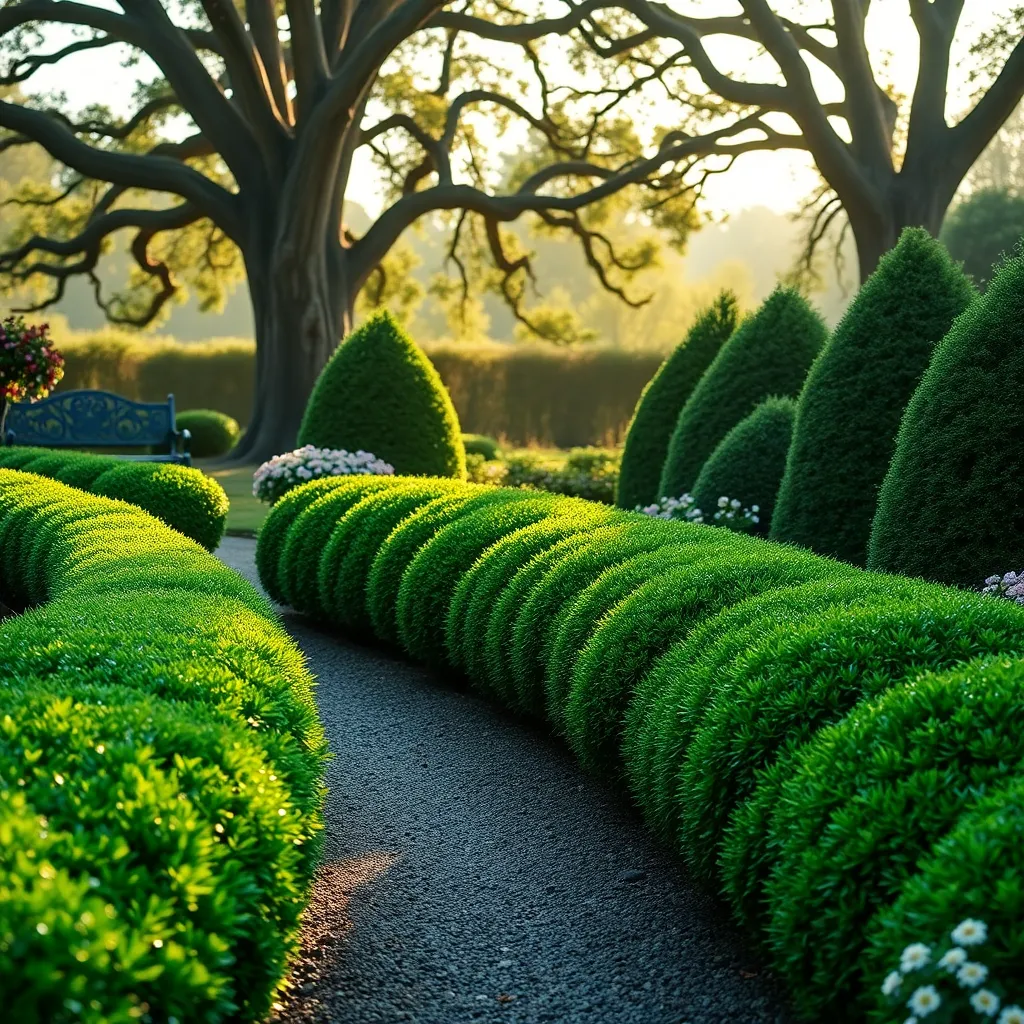
Boxwood shrubs are renowned for their versatility, making them a popular choice for creating formal hedges. They are evergreen, easy to shape, and thrive in a variety of settings.
These shrubs prefer well-drained soil with a neutral to slightly alkaline pH. Ensure your boxwoods receive full to partial sunlight, as this promotes healthy foliage and dense growth.
Watering boxwoods requires attention; they should be watered deeply but infrequently to encourage deep root growth. In dry spells or particularly hot climates, consider adding a layer of mulch to help retain soil moisture.
For those looking to create formal hedges, regular pruning is essential. Shape your boxwoods in late spring or early summer, and use sharp shears to maintain clean lines and encourage bushy growth.
Advanced gardeners may want to explore different cultivars, such as ‘Green Velvet’ or ‘Wintergreen’, for specific aesthetic qualities. Regardless of your choice, boxwoods offer a timeless elegance that enhances any landscape.
Hydrangea Bushes (Vibrant Blossoms for Seasonal Color)
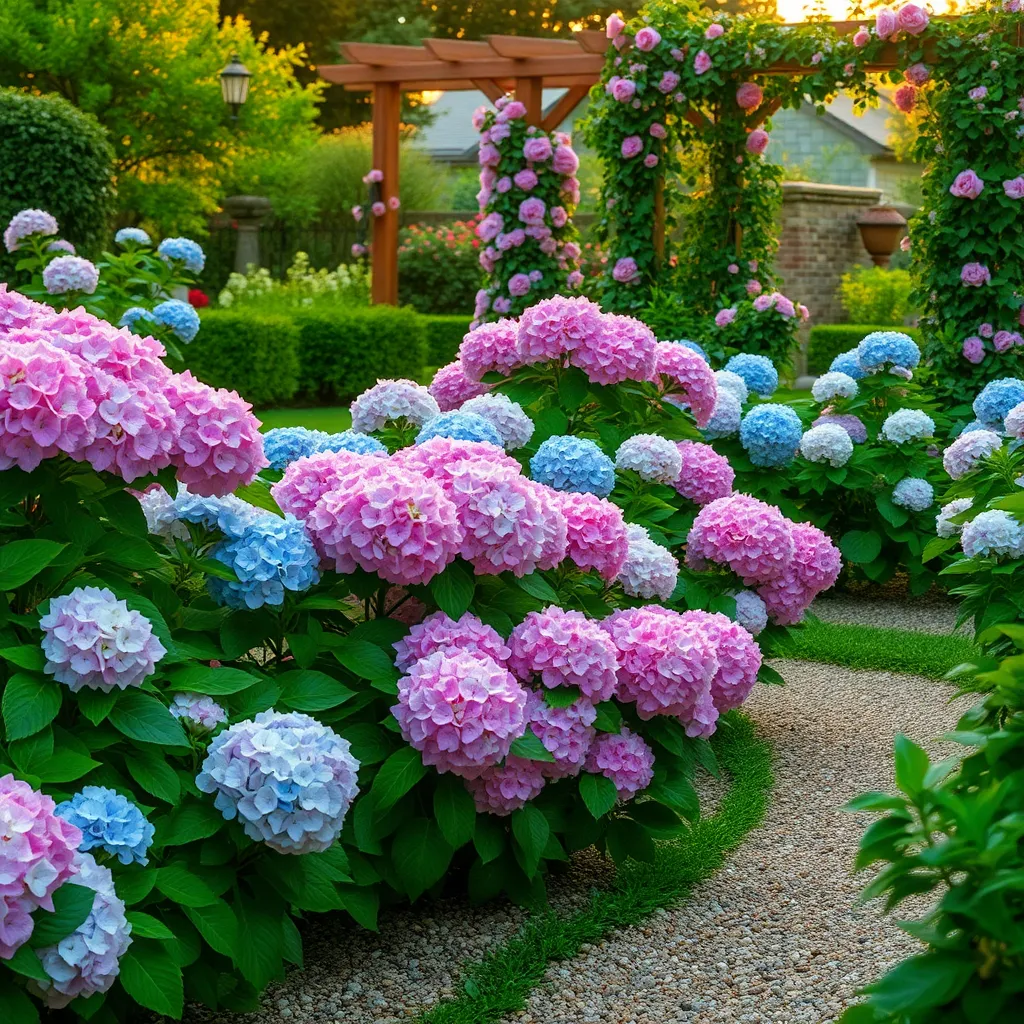
Hydrangea bushes are a popular choice for gardeners looking to add a splash of vibrant color to their landscapes. With a wide array of species offering various bloom colors, from striking blues to soft pinks, hydrangeas provide seasonal interest from spring through fall.
To ensure your hydrangeas thrive, plant them in a location with morning sun and afternoon shade. They prefer well-draining, rich soil, so consider adding organic matter like compost to improve soil quality before planting.
Regular watering is crucial, especially during dry spells, as hydrangeas have shallow roots that can dry out quickly. Aim for a watering schedule of about 1 inch per week, adjusting as necessary based on local rainfall and temperatures.
For those looking to experiment with bloom color, soil pH plays a pivotal role. You can influence the color of certain hydrangea varieties by adjusting the soil’s acidity; more acidic soils tend to produce blue flowers, while alkaline soils yield pink blooms.
Advanced gardeners might consider pruning techniques to maximize bloom size and plant health. For most hydrangea species, prune back dead stems in late winter or early spring, but avoid cutting back live wood as it may affect the flowering potential.
Japanese Barberry (Low-Maintenance with Striking Foliage)
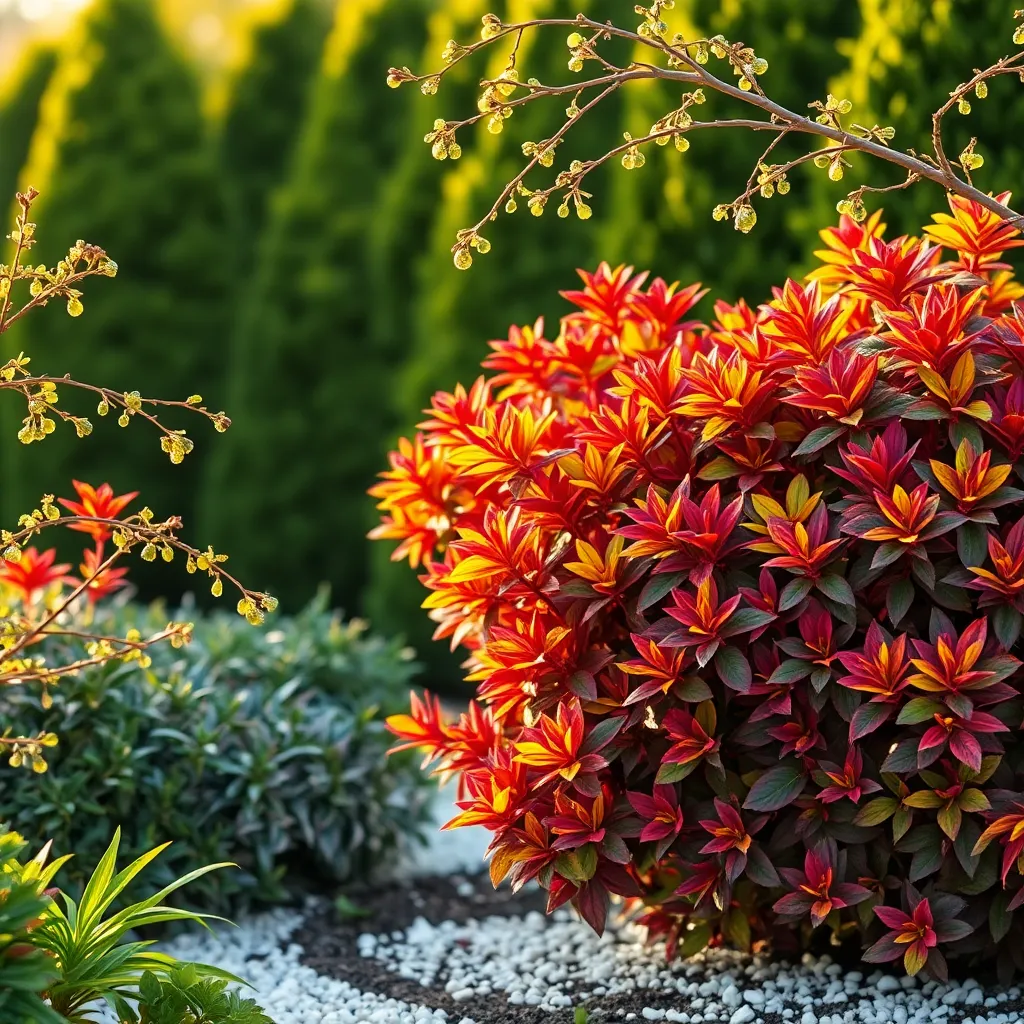
Japanese Barberry is a fantastic choice for gardeners looking for a low-maintenance shrub with striking foliage. Its vibrant leaves, ranging from deep red to bright yellow, add year-round interest to any landscape.
For best results, plant Japanese Barberry in a location with full sun to partial shade. This shrub thrives in well-drained soil and can tolerate a variety of soil types, making it versatile for different garden settings.
Watering needs are minimal; once established, Japanese Barberry is drought-tolerant and resilient. Regular pruning in early spring helps maintain its shape and encourages denser growth, keeping your garden tidy and lush.
While it’s an excellent choice for beginners, more experienced gardeners can experiment with different cultivars for varied foliage colors and textures. Consider planting Japanese Barberry as a natural hedge or as a striking accent in mixed borders to enhance your garden’s aesthetics.
Lilac Bushes (Fragrant Blooms for Spring Appeal)
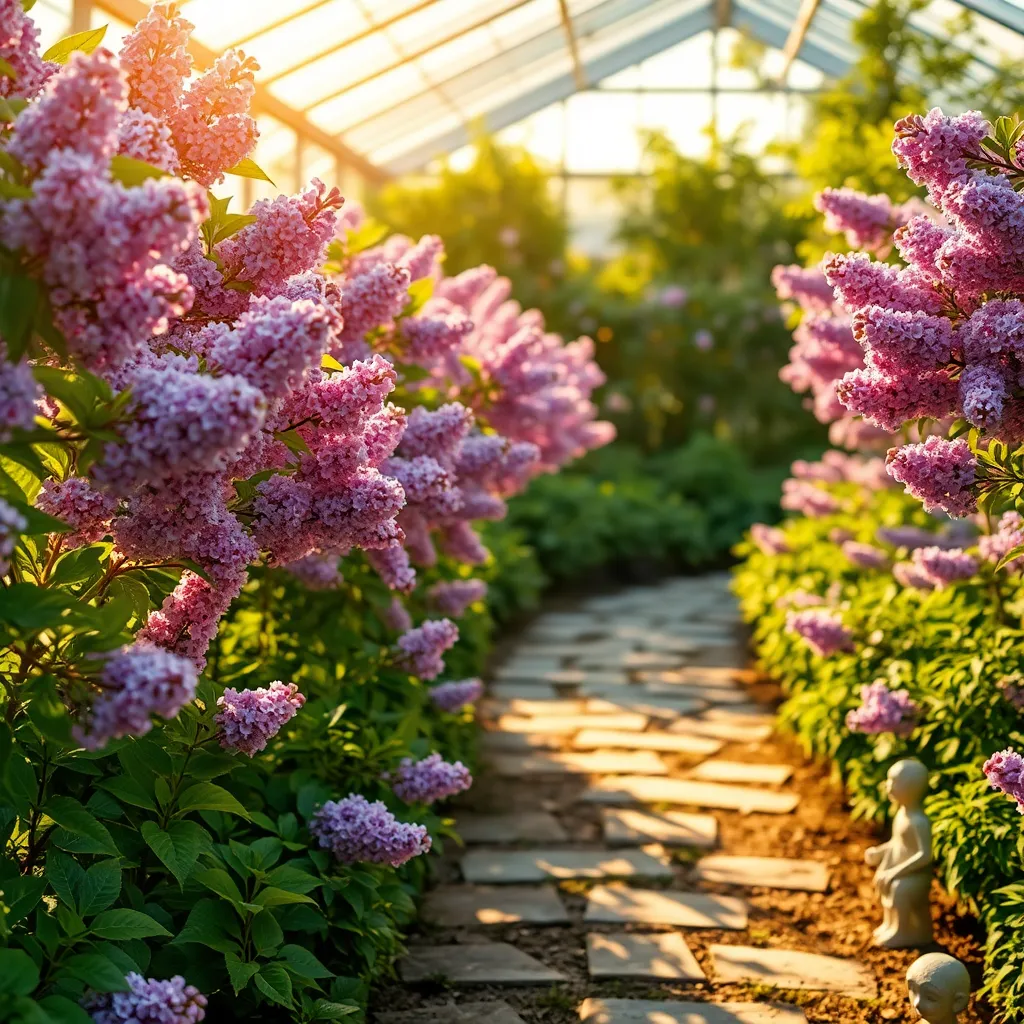
Lilac bushes are a splendid choice for gardeners seeking to add fragrance and visual appeal to their spring landscape. Known for their beautiful, aromatic blooms, lilacs thrive in regions with cold winters, as they require a period of dormancy for optimal flowering.
When planting lilac bushes, select a location that receives at least six hours of sunlight per day, as they prefer full sun to bloom their best. Ensure the soil is well-drained and slightly alkaline, with a pH level between 6.5 and 7.5, to support healthy growth and vibrant blooms.
Water lilacs deeply but infrequently, allowing the soil to dry out between waterings to prevent root rot. During the first year, water them once a week; thereafter, they are relatively drought-tolerant and require watering only during dry spells.
Pruning is essential to maintain the shape and health of your lilac bushes. Remove spent blooms immediately after flowering to encourage more vigorous growth and better blooms the following year, and conduct a more thorough pruning every few years to remove older stems and improve air circulation.
Juniper Varieties (Drought-Tolerant Options for All Climates)
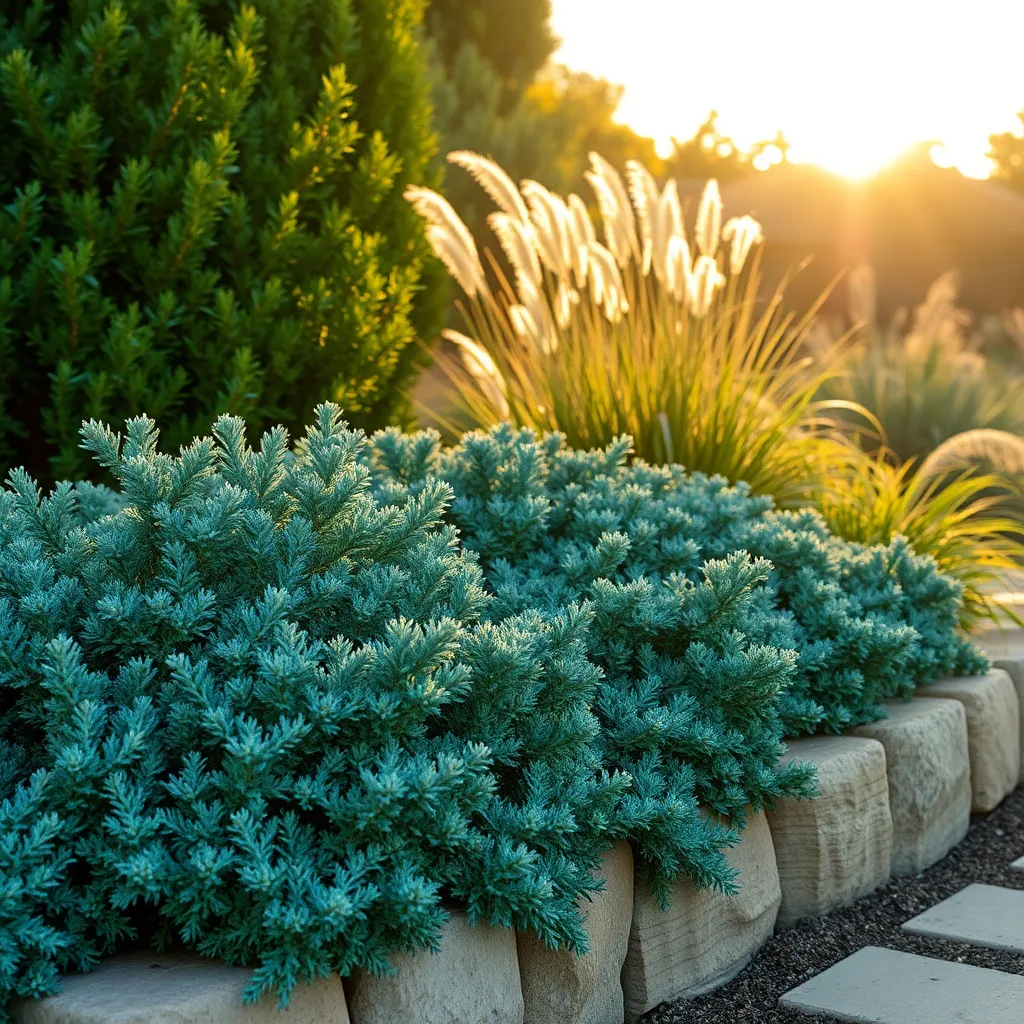
Juniper varieties offer an excellent drought-tolerant option for gardeners in various climates. These resilient shrubs can thrive in diverse soil types, provided they are well-draining. For gardeners looking to add visual interest, junipers come in a range of shapes and sizes, from low-growing ground covers to tall, narrow specimens. Choosing the right variety for your landscape ensures both aesthetic appeal and minimal maintenance.
Beginner gardeners will appreciate the straightforward care requirements of junipers. Water them deeply, but infrequently, allowing the soil to dry out completely between waterings. To maintain their robust health, plant junipers in a location with full sun exposure. Adequate sunlight not only supports healthy growth but also enhances the vibrant colors of the foliage.
For those with more experience, consider pruning junipers to encourage denser growth and shape them as desired. It’s best to prune in late winter or early spring before new growth appears. Advanced gardeners might experiment with different juniper varieties, such as the Blue Star or the Skyrocket, to create striking contrasts in their landscapes. Mixing multiple varieties can add depth and texture to any garden.
To ensure your junipers thrive, amend your soil with organic matter or sand if drainage is an issue. Regularly check the base of the shrubs to prevent waterlogging, which can lead to root rot. Remember, junipers are not just resilient; they’re also quite versatile, making them a valuable addition to any garden seeking drought-tolerant beauty. By following these care tips, gardeners can enjoy lush, healthy junipers that enhance their landscapes year-round.
Conclusion: Growing Success with These Plants
In exploring the vibrant world of landscaping, we’ve uncovered five key concepts that resonate deeply with nurturing our personal relationships: the importance of diversity, the value of patience, the necessity of nurturing, the power of boundaries, and the beauty of resilience. Just as a variety of shrubs can create a harmonious garden, so can diversity enrich our interactions, bringing depth and vitality. Patience, much like waiting for a plant to bloom, allows relationships to grow at their own pace. Nurturing, through attention and care, fosters strong connections, while setting healthy boundaries ensures mutual respect and space. Finally, resilience teaches us that with care, even the most challenging relationships can thrive.
Now, take an actionable step: choose one relationship in your life to apply these principles today. Whether it’s reaching out with understanding or setting a small, healthy boundary, begin nurturing it with intention.
Don’t let this valuable insight slip away—bookmark this article for future reference. As you cultivate these principles, envision a future where your relationships flourish like a well-tended garden, bringing joy and fulfillment. You have the power to make this vision a reality, one relationship at a time.
